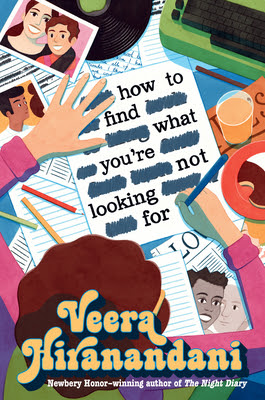It's June 1967, and 11-year-old Ariel "Ari" Goldberg has just learned that her sister Leah, 18, is in love. The only problem is that the Goldbergs are Jewish and want nothing more than for Leah to find a nice Jewish boy to marry. Instead, the boy Leah is in love with is Raj Jagwani, a Hindu from Bombay (now Mumbai), India, but an American citizen and a graduate student at NYU. And so Ari and Leah spend the summer meeting Raj on the sly.
But when school begins in September, everything changes. Leah has been forbidden to see Raj, and at school, Ari is sure she will face another year of struggling to write clearly until she is put into a class for kids who need more help. In the past, Leah had always helped her with her schoolwork, but now she's unhappy and too preoccupied with Raj. After Leah and Raj elope and just disappear, Ari is left to cope with school on her own. Then she discovers that her parent's bakery, Gertie's, is in financial trouble and may have to be sold. At school, Ari has always been tormented by an anti-Semitic bully, but luckily has always had her best friend Jane until they have a falling out.
Ari has also been waiting for her new teacher, Miss Field, to finally recommend she be put into the slow class, but at a conference with Ari and her mother, she tells them she suspects that Ari has dysgraphia, a learning disability in which a person can't write coherently. Mrs. Goldberg is convinced Ari's inability to write is just laziness and requires more practice. But Miss Fields encourages Ari to write poetry, something she finds is an easy way to express how she feels, on the classroom's electric typewriter.
When Ari's class is assigned a special current events project to present, Ari decides to do the Loving vs. Virginia case, something she learned about from Leah and a way to keep her connection to her beloved sister. Yet, unable to understand why she hasn't heard from Leah, Ari and Jane, who loves Nancy Drew mystery novels, decide to solve the mystery of where Leah has disappeared to.
This is indeed a novel about searching for something. If it seems that there is a lot going on in Ari's life in this novel, and that Hiranandani throws a lot of things at her - the Loving case, the Vietnam War, racism, anti-Semitism, and learning disabilities - it is also a thoughtful exploration of Ariel's search to find her own voice and place in her world, and it is also wonderful to watch how Ari grows and changes as events unfold. Written in the second person singular, it was a little odd at first to be reading historical fiction in the present tense, but it also brought the story closer, doing away with historical distancing. After all, some of the events and attitudes in this novel are still with us today.
I think the fact that Hiranandani is biracial, with a Jewish American mother and an Indian father, made this novel feel more relevant and important because she was speaking from experience. She handles Ari's story with sensitivity, humor, and honestly. One of the things I really found interesting were the chapter headings, which all began with How to... It was like a little preview of what was coming without giving anything away.
How to Find What You're Not Looking For is a wonderful heartfelt, character driven novel and if you think the ending is too pat, well, sometimes that's just what is needed.



































Wow—I had seen this book before, but I had no idea it was this compelling! It sounds like a lot of different topics are themes and packed in, which actually tends to be something I love in books. (I always want all the things, all at once!) I'm particularly intrigued by Ari's poetry, and by the ideas about interracial/interfaith marriage and Loving v. Virginia. Thanks so much for the thoughtful review, Alex!
ReplyDelete